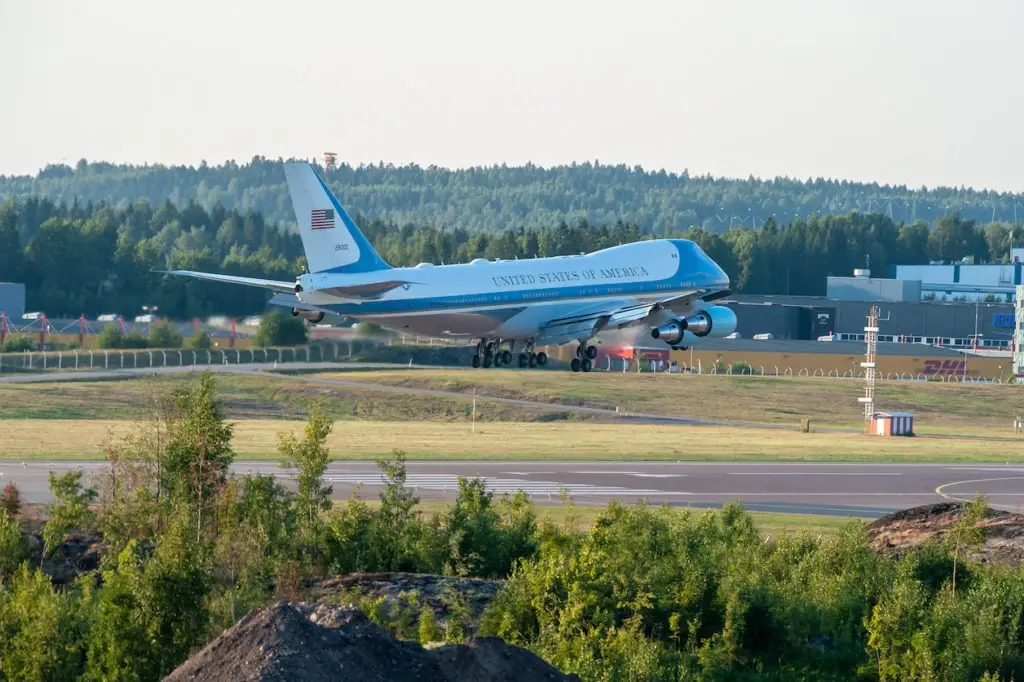With his outgoing nature, it isn’t surprising President Theodore (Teddy) Roosevelt, was the first president to use an airplane for travel, he had an incredibly adventurous spirit. In 1910 at a county fair in St. Louis, Mo., Roosevelt took to the skies as a passenger in an early Wright Flyer. While he was no longer an active president, it marked the beginning of presidential travel.
Later, in 1943, Franklin D. Roosevelt traveled in the Dixie Clipper, a Boeing 314 flying boat to the Casablanca Conference in Morocco. Before this, in 1933, a Douglas Dolphin amphibian was designated RD-2 by the U.S. Navy and based at the Anacostia D.C. naval base. It was modified with luxury upholstery for four passengers and a small separate sleeping compartment. The RD-2 remained in service as a presidential transport until 1939, although there are no reports of President F.D. Roosevelt ever having flown in it.
During World War II, military advisors were concerned about the risk of using commercial airlines for presidential travel. A C-54 Skymaster was converted for presidential use. It was dubbed the Sacred Cow and carried President F.D. Roosevelt to the Yalta Conference in 1945.
President Harry S. Truman would continue to use it for another two years. The Sacred Cow included a sleeping area, a radiotelephone, and a retractable battery-powered elevator to lift the president in his wheelchair. He would use it once on his trip to the Yalta Conference in 1945.
President Truman replaced the Sacred Cow in 1947 with a C-118 Liftmaster named the Independence. It would be the first presidential plane with distinctive markings, including a bald eagle on the nose.
The term Air Force One originated in 1953 when an issue with the same call signs being used between an Eastern Airlines commercial flight and the plane transporting President Eisenhower arose.
Toward the end of Eisenhower’s second term, Secretary of State John Foster Dulles noted the Russians were using technologically advanced aircraft for their travels, and it would be better if the presidential aircraft was updated. This paved the way for the Air Force’s initial procurement of 3 Boeing 707-120 (VC-137A) jet aircraft.
Upon Kennedy’s election in 1960, he inherited the VC-137A from Eisenhower. Not yet completed for presidential use, he contacted the French-born American industrial designer Raymond Loewy for help in designing a new livery and interiors for the VC-137. Loewy offered Kennedy his design consultation services without charging a fee and completed the project in 1962.
Under John F. Kennedy, presidential air travel entered the jet age. Although he could use the Eisenhower-era jets for trips to Canada, France, Austria, and the United Kingdom, when he came into office, his primary aircraft domestically was still a prop-powered Douglas VC-118A Liftmaster SAM (Special Air Mission) 26000.
President Lyndon Johnson used SAM 26000 to travel extensively domestically and to visit troops in South Vietnam during the Vietnam War.
SAM 26000 would also serve President Nixon on several groundbreaking overseas voyages, including his famous visit to the People’s Republic of China in 1972, and to the Soviet Union— both firsts for an American president. Nixon dubbed the plane the Spirit of ’76 in honor of the forthcoming bicentennial of the United States. The logo was painted on both sides of the plane’s nose.
President George H.W. Bush took possession of the first 747 Air Force One in 1990. By the end of his second term in 2009, a VC-25 was being used.
Today, the chief executive flies aboard a specially configured 747-200B, the newest and largest presidential airplane. It includes a longer range for presidential travel, aerial refueling, and self-sufficiency at airports around the world. It has 4,000 square feet of interior floor space. Within this space are a conference/dining room, and sleeping/rest quarters for the president and first lady. A medical facility, galleys, satellite communications, and of course high-end communication equipment, are among its many amenities.
List of presidential aircraft and associated presidents
1943, Boeing 314 Clipper
Franklin D. Roosevelt
1942-1945, Douglas C-54C (DC-4)
Franklin D. Roosevelt
Harry S. Truman
1947-1953, Douglas VC-118 (CD-6)
Harry S. Truman
Dwight D. Eisenhower
1959-1962, Boeing 707, VC-137A
Dwight D. Eisenhower
John F. Kennedy
Lyndon B. Johnson
Richard M. Nixon
1962-1990, Boeing 707, VC-137C
John F. Kennedy
Lyndon B. Johnson
Richard M. Nixon
Gerald R. Ford
James E. Carter
Ronald W. Reagan
George H. W. Bush
1990 – current, Boeing 747, VC-25A
George H. W. Bush
William H. Clinton
George W. Bush
Barack H. Obama
Donald J. Trump
Joseph R. Biden
The term Air Force One is not only known to most as the presidential aircraft, it is also the official control call sign designated for any U.S. Air Force aircraft carrying the president of the United States. Through the years, call signs have evolved. The current Special Air Mission (SAM) is 2800 when the active president-elect is on board and SAM 2900 when not on board.
Sources:
Air Force One – Wikipedia
Boeing: Air Force One
VC-137C SAM 26000 – Wikipedia
VC-137C SAM 27000 – Wikipedia
Air Force One – White House Museum

208-788-4956
208-788-4956
1616 Airport Circle Hailey, ID
8:00 am to 6:00 pm M-Th Closed Fridays